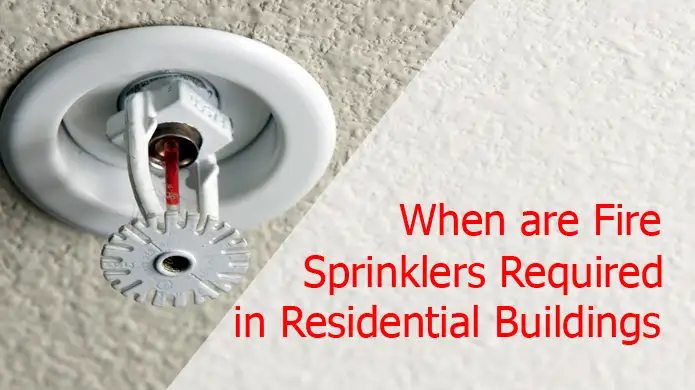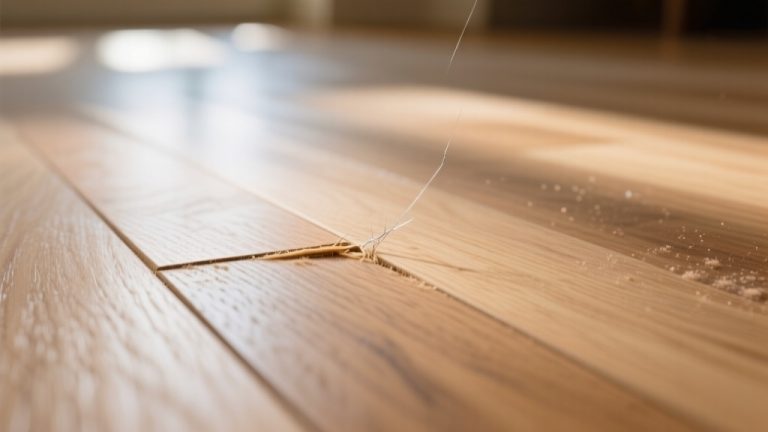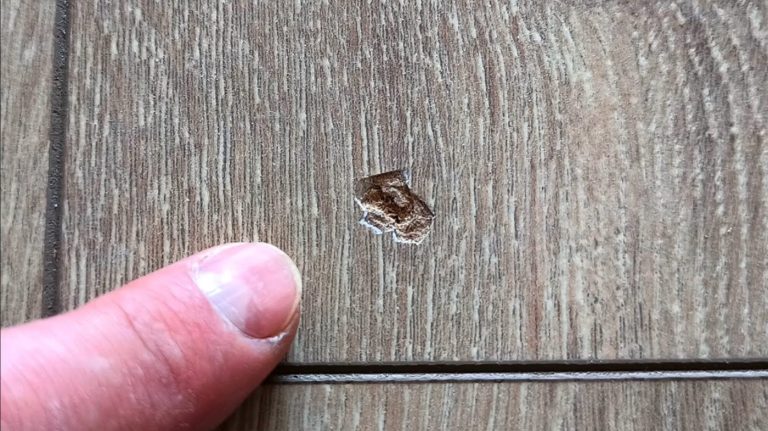When Are Fire Sprinklers Required In Residential Buildings: Why Mandatory
When most people think of fire sprinklers, they think of large office buildings or commercial spaces. But did you know that fire sprinklers are also required in residential buildings? Most people don’t, but it’s an important topic to be aware of.
People need to be aware of the dangers of fires and understand when fire sprinklers are necessary to protect them and their families. We have put together this comprehensive guide to answer all your questions about when are fire sprinklers required in residential buildings.
Fire sprinklers are required by law and the factors that influence whether or not they are installed in a particular building. Explore when fire sprinklers are required in residential buildings and what happens if they’re not installed. Provide some tips on how to stay safe if you are in a fire. So please keep reading and stay tuned.
When are Fire Sprinklers Required in Residential Buildings: Are they Mandatory?
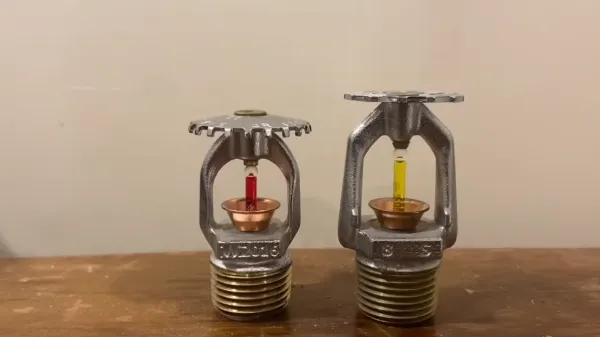
Yes, fire sprinklers are mandatory in residential buildings. Because they can help save lives during a fire. A fire sprinkler system can activate and put out a fire before firefighters arrive on the scene. This can help minimize the damage that a fire can cause and reduce the risk of injuries or deaths.
Fire sprinklers can also help keep a fire from spreading, which can further reduce the damage that it causes. In short, fire sprinklers are an important part of fire safety in residential buildings and can help save lives and your residential building.
The National Fire Protection Association (NFPA) mandates that all residential buildings with sleeping areas must have fire sprinklers installed. This includes both new construction and existing buildings undergoing renovations.
While the cost of installing fire sprinklers in residential buildings may be a concern for some, the reality is that they are an essential life safety measure that can save lives and protect property. When it comes to fire safety, there is simply no substitute for fire sprinklers in residential buildings.
How Do Fire Sprinklers Go Off?
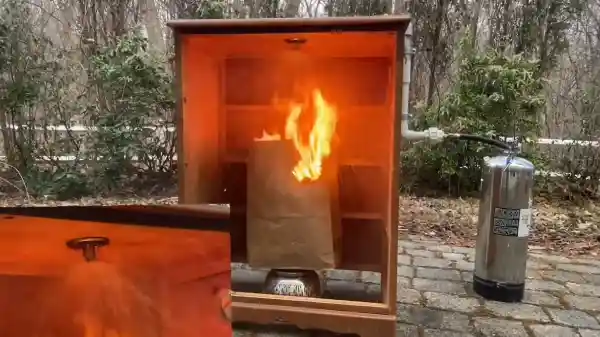
Fire sprinklers are activated by heat, not flames. The sensor is a small piece of metal that melts at a set temperature, in most cases, about 135 degrees Fahrenheit. When the sensor melts, it releases a pin that sets off the sprinkler head. A fire sprinkler system is set off when it detects heat.
The system has a sensor that will activate when it reaches a certain temperature. The sensor is designed to activate at a certain temperature to help to contain the spread of the fire at a certain temperature.
Once the sensor is activated, it will start the process of releasing water from the sprinkler head. The water will help to put out the fire and lower the temperature in the area. This can help to prevent the fire from spreading and causing more damage.
How Do You Know if Your Fire Sprinkler is Working?
You can test your fire sprinkler system by activating the test button. This will cause the system to release water from the sprinkler head. You should see a stream of water coming out of the head. If you do not see a stream of water, then you should check the system to make sure that it is working properly.
What Do You Do if Your Fire Sprinkler in Residential Buildings Goes Off?
If your fire sprinkler goes off, you should evacuate the area immediately. The water from the sprinkler can cause damage to your property, so it is important to get out of the area as soon as possible. Once you are out of the area, you should call the fire department so that they can come and assess the situation.
Wet Pipe Fire Sprinklers
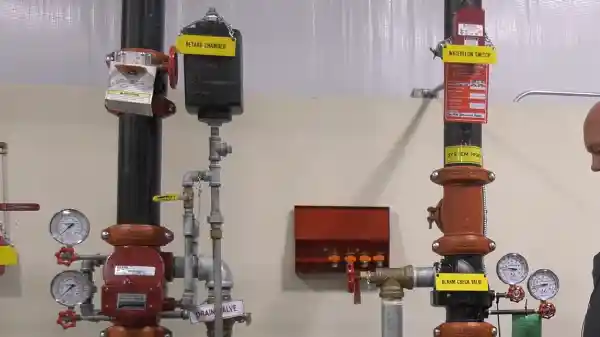
Wet pipe fire sprinklers in residential buildings are the most common type. As their name suggests, these pipes are constantly filled with water and ready for use in case of a fire. A wet pipe system is triggered by heat activated sprinkler heads, which detect temperatures above a certain threshold and release water to douse the flames.
It’s crucial that these systems are properly installed and maintained, as malfunctioning or blocked sprinkler heads can delay activation and put lives at risk. Following the recommended steps for installation and testing is essential for ensuring the effectiveness and reliability of residential fire sprinkler systems.
Dry Pipe Fire Sprinklers
Dry pipe fire sprinkler systems in residential buildings go off when there is a drop in pressure, usually caused by the activation of another fire sprinkler. They are not typically used in areas that may experience freezing temperatures, as the pipes could potentially freeze and cause low pressure.
If they are installed in a location where freezing is possible, it is crucial to take steps to prevent frozen pipes, such as draining and insulating them during cold weather.
Regular inspections should also be conducted to ensure all sprinkler heads are functioning properly and not blocked by dust or construction materials. In the event of a fire emergency, every second counts putting in the necessary effort to maintain your wet pipe sprinklers could potentially save lives.
Failure to do so could leave a building vulnerable to fire damage. Taking the necessary precautions with dry pipe fire sprinklers makes the difference between life and death in a fiery situation.
Is the Fire Sprinkler System Not Working?
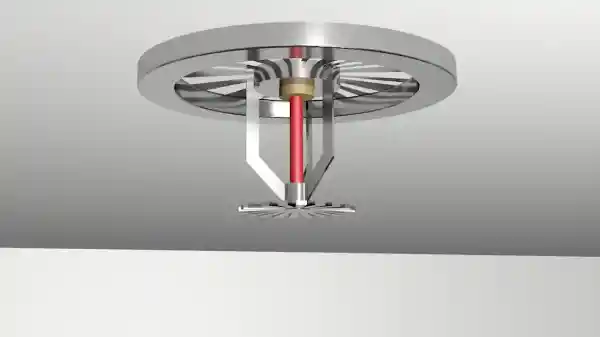
Make an assessment of the situation. Is there a current emergency, such as a fire? If so, evacuate immediately and call the fire department. If not, notify your building management or landlord right away. They can schedule an inspection to identify any issues and take steps to fix them.
Consider alternatives for preventing and extinguishing fires until the problem is resolved. This could include installing additional smoke detectors or keeping fire extinguishers on hand.
Remember to maintain a functioning fire sprinkler system can mean the difference in surviving in the event of a blaze. Do not delay in taking action if there may be an issue with yours.
Wet Pipe and Dry Pipe Fire Sprinklers: Similarities
Both the fire sprinklers’ dry pipe and wet pipe have several similarities. They are both activated by heat, they are both used to extinguish fires, and they are both made up of a number of components. When a fire starts, the goal is to extinguish it as quickly as possible. This is done by using a fire sprinkler system to spray water onto the flames.
One of the main similarities between a dry pipe fire sprinkler and a wet pipe fire sprinkler is that they both use heat to activate. This means that when the temperature in the area around the fire sprinkler reaches a certain level, it will activate and start spraying water or another firefighting agent onto the fire.
Finally, both fire sprinklers with wet pipes and dry pipes are constructed from several components. These components work together to activate the fire sprinkler and extinguish the fire.
Dry Pipe and Wet Pipe Fire Sprinklers: Differences
While wet pipe fire sprinklers and dry pipe fire sprinklers share many characteristics in common, there are also some key differences between the two. Wet pipe fire sprinklers are always full of water, while dry pipe fire sprinklers have a chamber that is filled with air.
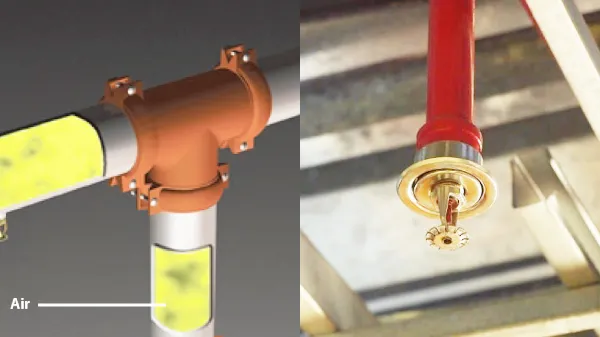
This means that dry pipe fire sprinklers will only start spraying water when the temperature in the room reaches a certain level. The two types of fire sprinklers mentioned are effective in certain situations.
Wet pipe fire sprinklers are the most common type, and they work by spraying water when activated. This makes them ideal to use in places where fires are prone to catch fires, such as in kitchens or near electrical equipment.
Dry pipe fire sprinklers work differently. They contain air rather than water, filling the pipes with nitrogen gas. When a fire starts, the heat causes the gas to expand and activate the sprinkler.
They are, therefore, ideal for use in areas where there is a risk of the fire spreading quickly, such as in warehouses or garages.
Wet pipe fire sprinklers are more prone to freezing in cold temperatures. This is because the water in the pipes can freeze and expand, which can cause the pipes to burst.
Dry pipe fire sprinklers are more resistant to freezing because the air in the chamber prevents the water from expanding and bursting the pipes.
Wet pipe fire sprinklers are more expensive than dry pipe fire sprinklers. This is because wet pipe fire sprinklers require more maintenance and have more components. Dry pipe fire sprinklers are less expensive because they require less maintenance and have fewer components.
Both wet and dry pipe fire sprinklers have their advantages and disadvantages. Choose the right type of fire sprinkler for your needs before installing a fire sprinkler system.
Consider the needs of your specific application, as they are not all suitable for all situations. If you are unsure, it is always best to speak to a professional to get advice on which type would be best for your premises.
How Do Fire Sprinklers Function?
Fire sprinklers are one of the most important safety features in a building. A fire sprinkler is used to extinguish or control fires by spraying water onto burning objects. The water is released from the sprinkler head as a fine spray or mist.
The sprinkler head is heated until it reaches its activation temperature. They work by detecting heat and then spraying water onto the fire to extinguish it. Once it reaches this temperature, it opens, and water is sprayed onto the fire.
The water cools the fire and ultimately extinguishes it. Fire sprinklers are a part of any fire safety plan. They function in a very effective way to extinguish or control fires. Fire sprinklers can be used to help for saving lives and property by extinguishing fires quickly.
They can be used in a variety of settings, and they are available in different types to suit the needs of different applications.
When choosing a fire sprinkler system, select the type that is best suited for the specific application. Have them installed by a professional and regularly test and maintain them to ensure they are working properly.
How Do Fire Sprinklers Detect Heat?
A fire sprinkler system is activated when it senses heat. The heat from a fire melts a small amount of metal at the sprinkler’s head, and this liquid drop falls through a small hole into the chamber below.
There, the heat from the fire vaporizes the water drop, which creates steam. This pressure increase trips a lever that opens a valve, allowing water to flow through the sprinkler heads and onto the fire.
Why Do Fire Sprinklers Detect Heat?
Fire sprinklers are triggered by heat in order to extinguish fires as quickly as possible. The hotter the fire, the more quickly the sprinkler will activate. This is why it is important to have them installed in your home or office they can help save lives and property if a fire breaks out.
How Do Fire Sprinklers Create Steam?
Fire sprinklers work by using a sensor that detects when there is heat present in the glass bulb. When the temperature around the bulb reaches a certain point, the bulb breaks, and water is released.
The water comes into contact with the hot metal parts of the sprinkler head, and this causes the water to turn into steam. The steam then forces the metal plate inside the sprinkler head open, and the water is sprayed out onto the fire.
At What Temperature Does The Fire Sprinklers’ Head Open To Spray Water?
The activation temperature of fire sprinkler heads can vary depending on the specific design and purpose of the system. Typically, residential sprinklers activate at around 155 degrees Fahrenheit, while commercial systems often activate at a higher temperature of approximately 165 degrees.
There are also special “quick response” sprinklers that activate at lower temperatures to effectively control fires that involve combustible materials like paper or wood. In addition to temperature, water pressure can also play a role in activating fire sprinkler heads.
For a sprinkler head to open and spray water, the detection system must register high enough temperatures and sufficient water pressure within the pipes. So when it comes to activation, the temperature is just one factor among many for fire sprinkler systems.

